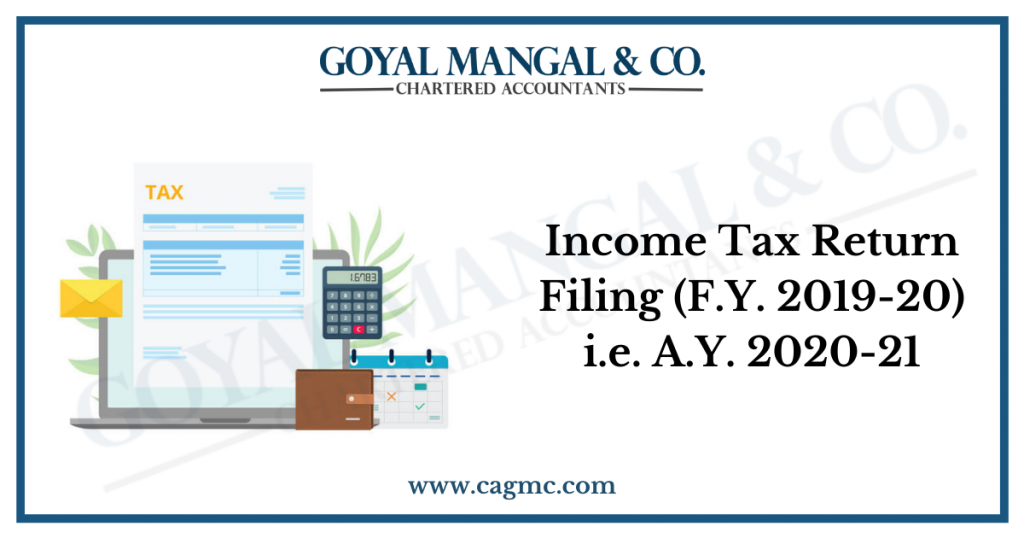
Welcome to the world of Tax Deducted at Source (TDS) for non-resident individuals! Understanding the taxes can be complex, especially when it involves individuals living outside their home country. In this blog, we’ll let you know about the essentials of TDS on Non-Residents, exploring why it matters, how it works, and the implications for both payers and recipients. Whether you’re a global worker or someone making payments to a non-resident, understanding TDS is important. Let’s dive into the basics and understand TDS on Non-Residents individuals.
Meaning of Non-Resident
As per Section 6 of the Income-tax Act, a Non-Resident (NR) is defined as an individual not residing in India. Qualify as a resident, one typically has to spend a minimum of 182 days in India during a financial year, or 60 days if the cumulative stay in the preceding four years exceeds 365 days. Nevertheless, there are conditions:
- Being an Indian citizen or of Indian origin (PIO) brings variations; your total income, excluding foreign earnings, becomes a factor.
- The 60-day requirement becomes 120 days if your income exceeds Rs 15 lakhs in the previous year.
- If your income is less than Rs 15 lakhs, the 60-day rule becomes 182 days.
- If you’re an Indian citizen working abroad, the 60-day rule changes to 182 days.
- Recently, a new rule (Section 6(1A)) says if you’re an Indian citizen or PIO earning over Rs 15 lakhs (excluding foreign income) and not taxed elsewhere, you’re considered an Indian resident.
Section – 195 – Applicability & Provision
Section 195 of Income Tax Act specifies the guidelines for imposing TDS on all payments made to Non-Residents by an Individual or a foreign company that are taxable in India, except for salary or interest as outlined in Sections 194LB, 194LC, and 194LD.
Section 195 of TDS on Non-Resident in Income Tax Act is applicable in the following situations:
- Money given to a non-resident for services provided or for the purchase of goods or merchandise.
- Any payment given to a non-resident, such as interest, royalties, technical service fees, or any other amount.
- Sending money to a non-resident (NR) individual located outside of India.
- It is crucial to acknowledge that Section 195 does not apply to payments made to Indian residents or Indian companies.
Who is eligible to deduct tax?
The term “payer or deductor” in this section refers to any individual who is mentioned as making a payment to a non-resident.
- An Individual
- A Hindu Undivided Family (HUF)
- Company or Limited Liability Partnership
- The organization
- AOP
- BOI
- Non-Resident
- Foreign Companies
- NRs, like resident individuals, have the ability to request a TDS refund when they submit their income tax return in India.
Other provision of Section 195
The following provisions pertain to Tax Deducted at Source (TDS) as mandated by Section 195 of the Act.
- The individual who deducts taxes under Section 203A of the Act must first acquire a Tax Deduction Account Number (TAN).
- Acquire the same, one must submit Form 49B (which is also accessible online) to the Income Tax Department.
- Submit the form, the person responsible for deducting should possess both their own PAN and the PAN of the non-resident deductee.
- If the deductor or deductee firmly believes that the entire income is not subject to tax, they can request an exemption or reduction in tax from the Assessing Officer.
- The order from the Assessing Officer includes information about the deduction rate for taxes and the duration for which it is applicable.
- TDS must be deducted at the moment of payment to the non-resident (NR) or when adding the amount to their account in the financial records, whichever comes first.
- The payer must deposit the deducted TDS amount through banks authorized by the Government of India or the Income Tax Department.
- This can be done by using a specific form number or challan for TDS payment, and it must be completed before the 7th of the following month in which the TDS was deducted.
- Once the TDS has been submitted, the payer is obligated to electronically file a TDS return by submitting Form 27Q within the designated timeframe.
- Quarterly returns for TDS are submitted. The deadlines for submitting Form 27Q are July 31st, October 31st, January 31st, and May 31st for the first, second, third, and fourth quarters, respectively.
- The deductor must issue the TDS certificate to the NR deductee within 15 days after the deadline for filing the TDS returns for the quarter once they have been successfully submitted. Form 16A contains the certificate for the deduction of TDS.
TDS Rates under Section 195
The TDS on Non-Resident rate according to Section 195 is determined by the type of payment and the regulations set in the Double Taxation Avoidance Agreement (DTAA) between India and the NR’s resident country. If a Double Taxation Avoidance Agreement (DTAA) is not in place, the Tax Deducted at Source (TDS) rate will follow the regulations stated in the Income Tax Act of 1961.
The TDS rates mentioned in Section 195 will be modified by adding the surcharge and education cess that are applicable. If the payment to the NR is being made according to the rates specified in the DTAA, then the surcharge and education cess should not be added. The Income Tax Act specifies the rates that apply to different types of income earned by non-residents.
- Income in respect of investment made by NR – 20%
- Income by way of Long-Term Capital – 20%
- Income by way of long-term capital gains in Section 115E, Section 112 and 112A – 10%
- Income by way of short-term capital gains under Section 111A – 15%
- Any other income by way of long-term capital gains – 20%
- Interest payable on money borrowed in Foreign Currency – 20%
- TDS rate on foreign payment for professional services and Income by way of royalty and/or fees for technical services – 10%
- Any other income – Other than Company- 30%
- Any other income-Company- 40%
Form 15CA & 15CB
The person responsible for such remittance (payment) must file Form 15CA before remitting the payment. In some cases, a certified public accountant’s certificate in Form 15CB is required before uploading Form 15CA online. Provision of payment information to NR through Form 15CA he is divided into four parts.
- Part A: If the total amount of remittance or remittance does not exceed Rs. 500,000 during the financial year.
- Part B: If the sum of remittances or remittances exceeds Rs. 500,000 during the financial year and obtained orders/certificates under Sections 195(2)/195(3)/197 of the Act from the Assessing Officer.
- Part C: If the remittance or the total amount of such remittance exceeds Rs. Paid 500,000 during the financial year and obtained a certificate in Form No. 15CB from the accountant.
- Part D: If the remittance is not taxable under the law.
Penalties and consequences of Noncompliance of Section 195
Consequences can be faced by individuals who are accountable for making a payment if they fail to subtract the necessary tax or fail to comply with the regulations stated in the Income Tax Act of 1961.
- If the deduction for TDS is not made, the costs cannot be claimed as deductions as per Section 40(a)(i), implying that the expenses will not be permitted.
- If the tax deduction is made but not timely deposited,
- If the tax that has been deducted is not paid by the designated due date, a 1.5% interest will be imposed every month (or portion of a month) from the deduction date until the payment is made.
- If the tax is subtracted but remains unpaid. A fine will be levied, and the fine amount will match the deducted tax.
- If there is a deficit in the TDS deducted, A penalty will be imposed if the deducted tax amount is lower than expected.
- The punishment is the same as the discrepancy between the deductible amount originally stated and the amount that was withdrawn.
Put simply, if you’re in charge of making payments to someone and fail to comply with tax deduction regulations, you may miss out on deductions for expenses, incur interest for late payments, be penalized for not paying the deducted tax, and additionally face penalties for any deficit in the deducted sum. Prevent such problems, it is crucial to follow the regulations specified in Section 195 of the Income Tax Act.
Procedure for obtaining TDS exemption certificate.
Procedure for obtaining TDS exemption certificate is:
- Identify Eligibility: Check if you qualify for TDS (Tax Deducted at Source) exemption. Certain categories of income or entities may be eligible for exemptions.
- Application Form: Obtain the required application form for TDS exemption. This form is usually available on the official website of the Income Tax Department.
- Fill in Details: Complete the application form with accurate information. Provide details such as your name, address, PAN (Permanent Account Number), and the nature of income for which you are seeking exemption.
- Supporting Documents: Gather supporting documents that validate your eligibility for TDS exemption. This may include proofs of income, certificates, or any relevant documents specified in the application form.
- Submit to Relevant Authority: Submit the filled application form along with the supporting documents to the appropriate income tax authority. This could be the assessing officer or any other designated authority as per the guidelines.
- Verification and Processing: The income tax authority will verify the information provided and assess your eligibility for TDS exemption. This may involve communication or clarification requests from the tax department.
- Issuance of Certificate: If your application is approved, the income tax department will issue a TDS exemption certificate. This certificate will specify the nature of income and the period for which the exemption is granted.
- Use of Certificate: Provide a copy of the TDS exemption certificate to the deductor (the entity making the payment to you). This informs them that TDS should not be deducted on the specified income as per the granted exemption.
- Renewal or Changes: Keep track of the validity period of the exemption certificate. If there are changes in your income or if the certificate expires, follow the renewal or re-application process as needed.
- Compliance: Ensure ongoing compliance with the conditions mentioned in the exemption certificate to avoid any issues with the tax authorities.
Remember, it’s essential to follow the specific procedures outlined by the tax department and provide accurate information to facilitate a smooth application process.
Takeaway
In conclusion, understanding and adhering to TDS regulations for non-resident individuals is crucial for both payers and recipients. Payers must diligently deduct TDS as per the specified rates, and non-residents should be aware of their tax liabilities. Proper documentation, timely filing, and compliance with tax authorities ensure a smooth process. By staying informed and following the guidelines, both parties contribute to a transparent and efficient taxation system, raising a compliant and trustworthy financial environment for non-resident transactions.


